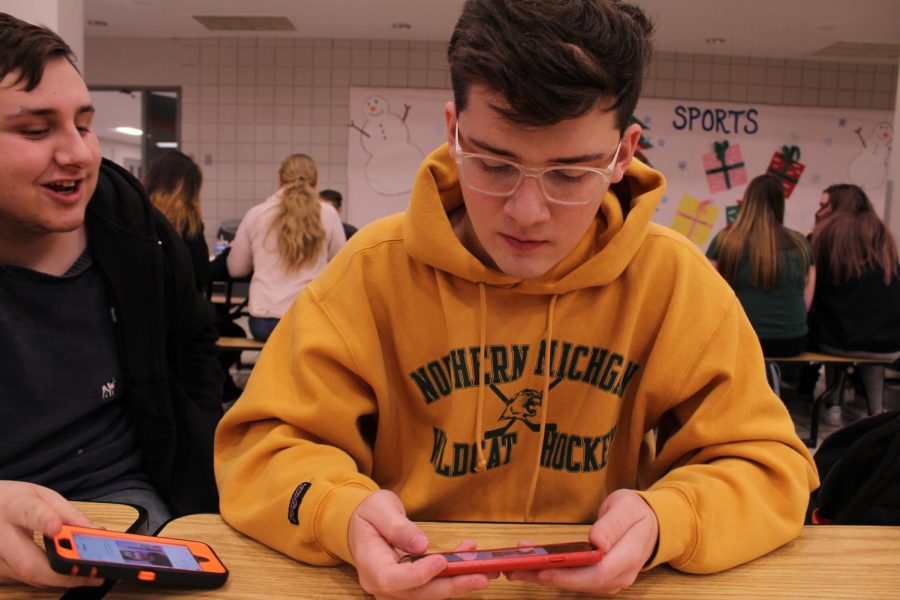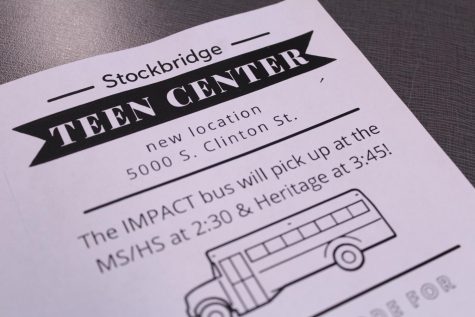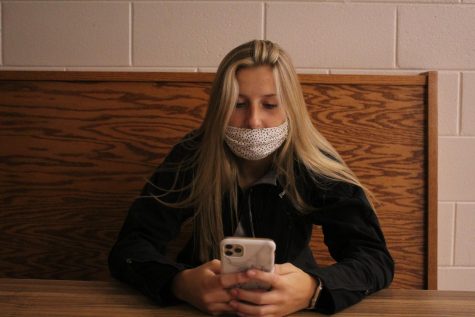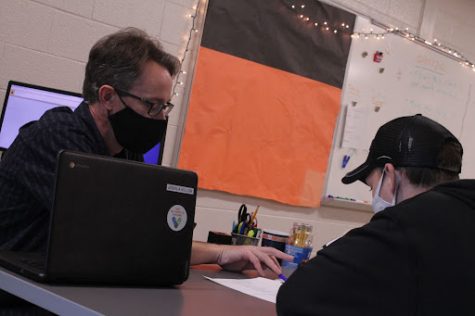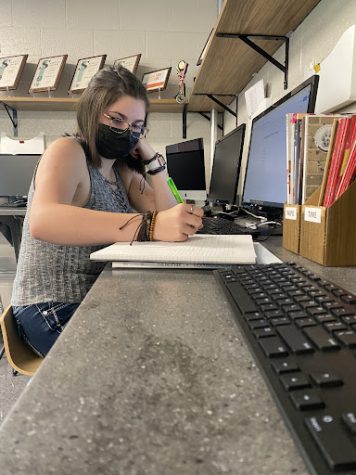Game on: Disconnectedness in the classroom
Students like junior Andrew Carriero play Fortnite in school, distracting both themselves and the other students around them.
Students in class now have the whole world at their fingertips which can be distracting. Classwork is now almost completely digital, but so are social media and games of which some students can’t resist their call.
The 21st century brought new technology into our lives and schools, and along with it, new distractions. Both teachers and students now have the whole internet at their disposal allowing for classwork and assignments to be online, but students have games and social media that they can use instead of completing classwork.
When confronted with this issue, teachers have devised ways to combat this problem. “Some [students] play games. I try to redirect them,” English teacher Jessica Martell said. “There are natural consequences They don’t understand what they are supposed to be doing, and they don’t get their work done.”
If students are consistently playing Fortnite in class, physically separating them from their phones is priority number one, said Liz Kolb, a clinical associate professor of education technologies at The University of Michigan in Ann Arbor. “Kids can’t multitask,” she said. “Even having a digital device within sight can cognitively distract the student enough that they can’t focus on the academics.” Even if children are only playing Fortnite at home, it can still affect their ability to participate at school. Rebecca Young, a teacher at Stanley Middle School in Lafayette, Calif., said students have been coming into her class with unfinished homework and bags under their eyes.
— Education Weekly
Hearing this would make teachers and, believe it or not, some students want to have no technology in the classroom at all; however, that is not what teachers think would be the best for their students.
“I think the technology creates more and diverse ways to engage students,” Martell said. “Distractions and tech will be in the real world, too, and it allows for less of me talking at them and more of me assisting them.”
Alfonzo Porter, a contributor to the Washington Post, former teacher and school administrator thinks, “For many, technology has become a catalyst for distraction and off task behavior with students, tweeting, or prowling through YouTube when they’re supposed to be listening to the teacher or doing classwork promotes a lack of focus.”
As technology has become more prominent in everyday life, researchers have looked into its effects in the classroom. “Nearly 90 percent of teachers believe that digital technologies were creating an easily distracted generation with short attention spans,” according to an analysis by the Washington Post of a survey from the Pew Research Center.
About 60 percent said it hindered students’ ability to write and communicate face-to-face. Almost half said it hurt critical thinking and their ability to do homework. Communication isn’t the only skill becoming a lost art.
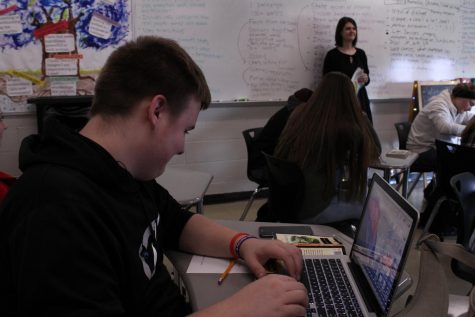
Students, however, disagree with that research. “I can look up something when the teacher is talking about something and, like, think what I think about it. I look it up,” said sophomore Ronald Fillmore. Concentration and reasoning seem to be disappearing as well. Some “76 percent of teachers believed students are being conditioned by the internet to find quick answers, leading to a loss of concentration,” the Pew Research Center found.
However, students do admit that tech in the classroom has its drawbacks. Fillmore admitted to being distracted by using social media. This detrimental distraction doesn’t mean that students want to go back to when we didn’t have Chromebooks. “It wasn’t easier to learn before we had Chromebooks because we could do less stuff,” Fillmore added.
Students aren’t the only ones to benefit. This advancement gets rid of the age old problem of not being able to read students’ handwriting. “I can type faster than I can write and the teachers are more likely to be able to read it if I type it,” Fillmore said.
Math and science teacher Jason Rickli thinks that even though the Chromebooks are another means for being distracted, they are better than going back to pen and paper, and likes the new way.
“It’s not a traditional world,” Rickli said. “We have technology intermingled into the world. We need to learn how to be responsible [on Chromebooks], and part of that is learning how to be responsible on them at school.”
With the increase of technology in the class comes an increase on rules and regulations of what can and can’t be used.
“I think the new cell phone policy helps,” Martell added. The school administrators are keeping up with the new advances in tech to keep classrooms under control and students focused on class with policies on cell phones and restrictions on websites, so students aren’t on games or social media. As good as this may seem, it isn’t entirely practical. When tech administrators block games or bad websites they invertedly block a few good ones which can become an issue.
“Over time, the school became increasingly restrictive of what websites students could access, or the apps they could download, out of fear that they would be harmed or waste their time,” Miranda Cook, a student blogger from London said. “ However, this reduced the utility of having iPads in the first place, as the restrictions inadvertently extended to useful websites (like dictionaries, which were blocked as they contained bad words).”
YouTube, Instagram and Snapchat are the most popular online platforms among teens, while Twiter was ranked fifth.
— pew Research Center
This inevitably happens to everyone: Teachers can’t use some websites in lessons and students can’t use some websites for classwork or projects. This doesn’t mean those websites are bad, more that the technique used for blocking websites isn’t as perfect as needed for this type of environment.
The district uses the Google Suite as it is free and can be used by everyone to collaborate.
However, Google also has apps such as Hangout which has a FaceTime feature made by Google that allows for hangouts with people, like guest speakers who can’t come to the school. This gets used in some classrooms by teachers to have meetings with other teachers in school districts. The district, however, has blocked it from students as it is seen as more of a social platform than an educational one.
Yet, many games such as coolmath4kids, Tetris and others are not blocked. Instagram and Facebook are also accessible from school computers even though they are websites the school doesn’t want students on. It is so tempting during a lecture or work time to go on these sites and they are accessible so there is no point in blocking websites in the first place.



